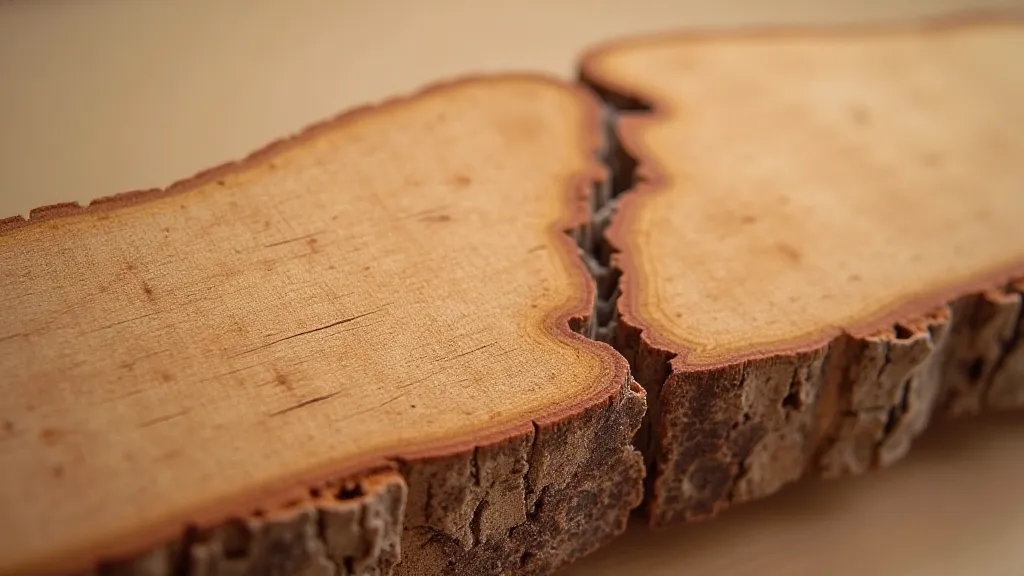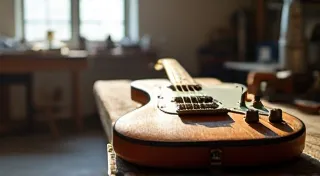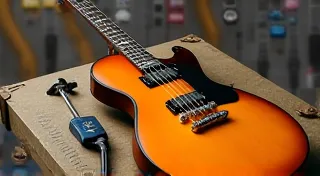Choosing Your First Guitar Wood: A Beginner's Guide
So, you're embarking on the exciting journey of building your first electric guitar! One of the most important decisions you'll make is choosing the right wood. The wood you select significantly impacts the tone, feel, and aesthetics of your instrument. This guide breaks down popular choices for beginner guitar builders, keeping things simple and focusing on what's practical for your first DIY project. Before diving into wood selection, make sure you have the right tools. Check out our list of essential tools for building your first electric guitar to ensure a smooth and successful build!
Why Does Wood Matter?
Wood is more than just something to shape and finish. It vibrates! The way it vibrates – its density, stiffness, and internal damping – directly affects the guitar’s tone. Different woods have different sonic personalities. Some are bright and snappy, while others are warm and resonant. Beyond tone, wood also affects how the guitar feels to play and how it looks. The choice of wood is intertwined with the pickup choices too. Learning about choosing the right guitar pickups will help inform your tonal goals.
Common Guitar Woods for Beginners
Let's explore some frequently used woods, with a focus on their tonal characteristics, workability (how easy they are to work with), and price point. Keep in mind these are general guidelines; individual pieces of wood can vary. Building a Telecaster style guitar is a fantastic first project, and understanding wood’s properties will be crucial for a great result. You can explore different designs by researching a Telecaster build for beginners.
Alder
Tone: Alder is a workhorse wood known for its balanced and neutral tone. It provides a good foundation for various pickup combinations, allowing the pickups to largely define the guitar’s sonic character. It's known for its sustain. Workability: Relatively easy to work with. Machines well, sands smoothly, and glues well. Price: Mid-range. Generally accessible and a good value.

Ash (Swamp Ash & Northern Ash)
Tone: Ash comes in two main varieties: Swamp Ash and Northern Ash. Swamp Ash is lighter and known for its resonant, airy tone with good sustain. Northern Ash is denser and brighter, providing a more focused and powerful sound. Workability: Can be a bit harder to work than Alder, especially Northern Ash. Grain can be open and prone to tear-out if not careful. Price: Mid-range to slightly higher. Swamp Ash is often sought after and can be more expensive.
Mahogany
Tone: Mahogany offers a warm, rich, and slightly mellow tone. It provides a full-bodied sound with good sustain. It is often associated with a “vintage” tone. Workability: Generally easy to work with, but can be a bit oily. Machines well, but needs sharp tools. Price: Mid-range to higher, depending on grade and availability. Honduran Mahogany (often labelled just as Mahogany) is increasingly difficult to source and priced accordingly.

Basswood
Tone: Basswood is known for its soft tone and excellent response across the frequency spectrum. It's often used for guitars where high-gain pickups are used, as it doesn’t tend to get “muddy” with distortion. Workability: Basswood is exceptionally easy to work with – a great choice for beginners. It's soft, machines easily, and sands beautifully. However, this softness also means it can be prone to dents and scratches. Price: Generally the most affordable option.

Beyond simply choosing the wood, understanding its properties helps in shaping the body. Consider the process of creating a simple Stratocaster style guitar body for an alternative approach.
Making Your Choice
For a first-time guitar builder, Basswood is often recommended due to its ease of workability and low cost. Alder is another excellent choice, offering a balanced tone and good workability. Mahogany is fantastic but can be slightly more challenging to work. Ash is a good choice, especially Swamp Ash, but be prepared for slightly more demanding work. The interplay of wood and pickups is crucial, and the choices should complement each other to achieve the desired sound. For instance, a warm mahogany body might benefit from brighter pickups to cut through the mix.
Understanding Wood Grades and Appearance
It's not enough to just select a species of wood; understanding wood grades is vital for a successful build. Wood is graded based on several factors including grain pattern, knots, color uniformity, and the presence of defects. “A” grade lumber is the highest quality, with minimal imperfections and a beautiful grain. Lower grades might have more knots, color variations, or other characteristics that might affect the final appearance and workability. While "A" grade is ideal for visible areas like the top of the guitar, lower grades can be perfectly acceptable for parts of the guitar that are less visible or where those characteristics won't impact the overall structure. Look for lumber that is free from excessive checking (small cracks in the wood) and that has a consistent moisture content. Knowing these characteristics will ensure that the wood is stable and will not warp or crack after the guitar is built.
Finding Good Wood
Not all wood is created equal. Look for wood that is:
- Kiln-dried: This reduces the risk of warping or cracking after the guitar is built.
- Straight-grained: Wild grain patterns can make machining difficult.
- Free from knots and cracks: These weaken the wood and can be difficult to work around.
- Sufficiently thick: Typically, guitar bodies are 1.75" (44.5mm) thick.
Sourcing Wood: Local Lumberyards vs. Online Suppliers
Where you source your wood can influence both the price and the quality. Local lumberyards often provide a more personal touch and allow you to physically inspect the wood before buying. This is invaluable when choosing guitar wood, as you can assess the grain pattern, color, and overall quality. Online suppliers offer a wider selection, including more exotic woods, and can sometimes offer better prices, especially if you're buying in bulk. However, you can't physically inspect the wood before buying, so it's essential to choose a reputable supplier with good return policies. Consider factors like shipping costs and lead times when comparing options. A combination of both local and online sources can be ideal: visit local lumberyards to learn about different species and inspect the wood in person, then shop online for more specialized or hard-to-find varieties.
Beyond the Basics: Exploring Alternative Woods
While Alder, Ash, Mahogany, and Basswood are common choices for beginner guitar builders, the world of guitar woods is vast and exciting. Other woods like Poplar, Walnut, and Koa offer unique tonal and aesthetic qualities. Poplar is another affordable and easy-to-work-with wood that offers a slightly brighter tone than Basswood. Walnut is known for its rich, warm tone and beautiful grain pattern, but it can be more challenging to work with. Koa is a visually stunning wood known for its bright and airy tone, but it's relatively expensive and requires more experience to work with effectively. Exploring these alternative woods can lead to some truly unique and inspiring guitar builds, but remember to do your research and choose a wood that aligns with your skill level and tonal goals.





